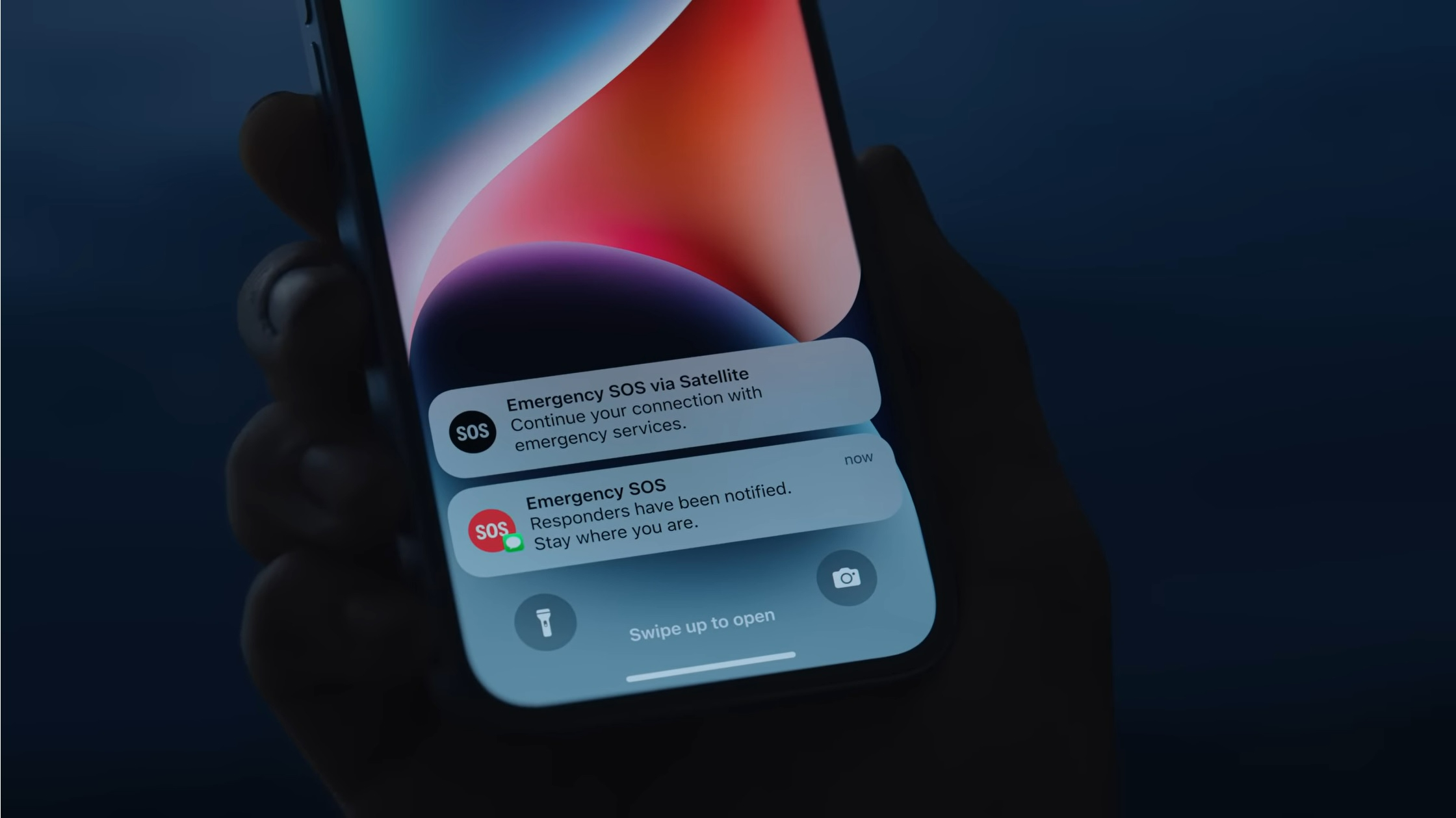The iPhone's Emergency SOS via Satellite feature is free for another year, and I think I might know why
How do you even charge for it?

When Apple announced the iPhone 14 and iPhone 14 Pro models back in September of 2022 it also announced Emergency SOS via Satellite, a feature that would go on to very much save lives. But it wouldn't be available until November with iPhone buyers getting two years of access. The iPhone 15 and iPhone 15 Pro both come with the same two-year offer, too.
With Apple offering the Emergency SOS via Satellite feature free for a limited time it was always assumed that it would start to charge money for it in the future. That could either be via a new subscription offering or as part of Apple One, but it was surely going to come one way or another.
But fast-forward a year and we get to November 2023 when, earlier this week, Apple announced that it is extending the feature's free two-year period for an extra 12 months for existing iPhone 14 owners to take them to November 2025. But why?
How cool is Emergency SOS via Satellite anyway?
First, we need to back up a bit and discuss what Emergency SOS via Satellite actually does, because it's pretty incredible. In its most simple form, the feature allows people to summon help from emergency services when they would otherwise not be able to due to a lack of cellular service. Think people at the top of a mountain or out in the wilderness where there just isn't hope of a connection to a carrier, let alone full bars. Using satellites in low orbit, iPhone 14 and iPhone 15 devices can send and receive short text-based messages. And it's those messages that help emergency services get help to those who need it.
When Apple announced that it was extending the lifesaving feature it was keen to point out that's very much what it is — a lifesaver.
“Emergency SOS via satellite has helped save lives around the world. From a man who was rescued after his car plummeted over a 400-foot cliff in Los Angeles, to lost hikers found in the Apennine Mountains in Italy, we continue to hear stories of our customers being able to connect with emergency responders when they otherwise wouldn’t have been able to,” Kaiann Drance, Apple’s vice president of Worldwide iPhone Product Marketing, said via that press release. And they're right. There have been plenty of heartwarming stories of people's iPhones helping them get help.
That's great, right? It sure is. But it might also be the reason Apple can't bring itself to charge for the service, too.
iMore offers spot-on advice and guidance from our team of experts, with decades of Apple device experience to lean on. Learn more with iMore!
Putting a price on a life

We already know that Apple is sensitive to any kind of negative publicity, so with that in mind let me paint you a picture with words.
Imagine you're a hiker, and you're off on a trail that takes you well beyond anything that Verizon, AT&T, or any of your chosen carriers can reach. It's beautiful because it's so remote. And you're having a whale of a time.
With me so far?
Except, you stumble. You fall down a cliff, hitting branch after rock after seemingly anything else you can find on your way down. You come to rest and, thankfully, you're alive. But you've broken your leg and your breathing isn't as easy as it should be. You've no signal, obviously. But not to worry — you have the latest iPhone so you set about using Emergency SOS via Satellite to call for help.
Except, you got a new card last week and your Apple One subscription payment didn't go through. Your iPhone thinks you don't have the lifesaving feature and you're stuck. What now?
Now, yes, there are ways around this. The iPhone could make the call regardless and charge later — but if it does that, why pay for it in the first place? It'd become a pay-as-you-go service that nobody would pay a subscription for. And maybe that's the route Apple takes if and when it finally starts to charge people for this thing.
But I do know what it won't want to do — risk a headline that says someone unfortunately died because their iPhone wouldn't let them call for help when they needed it. And until Apple can be sure of how to get around that problem, I can see this particular feature being free forever. As it probably should be.
More from iMore

Oliver Haslam has written about Apple and the wider technology business for more than a decade with bylines on How-To Geek, PC Mag, iDownloadBlog, and many more. He has also been published in print for Macworld, including cover stories. At iMore, Oliver is involved in daily news coverage and, not being short of opinions, has been known to 'explain' those thoughts in more detail, too.
Having grown up using PCs and spending far too much money on graphics card and flashy RAM, Oliver switched to the Mac with a G5 iMac and hasn't looked back. Since then he's seen the growth of the smartphone world, backed by iPhone, and new product categories come and go. Current expertise includes iOS, macOS, streaming services, and pretty much anything that has a battery or plugs into a wall. Oliver also covers mobile gaming for iMore, with Apple Arcade a particular focus. He's been gaming since the Atari 2600 days and still struggles to comprehend the fact he can play console quality titles on his pocket computer.
